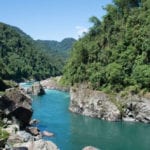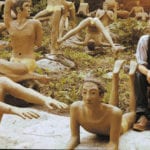 Weird Stuff
Weird Stuff  Weird Stuff
Weird Stuff  History
History 10 Legends Whose Last Moments Undid Their Glory
 Health
Health 10 Futuristic Ideas to Treat Common Medical Problems
 Weird Stuff
Weird Stuff Ten Surreal Attempts to Reverse Baldness
 Facts
Facts 10 U.S. Government Contingency Plans for the Unthinkable
 History
History 10 Weird Distractions from the Great Depression
 Movies and TV
Movies and TV 10 Fictional Kings Who Go from Good to Bad
 Food
Food The Fantastic Chemistry Behind Why 10 Popular Foods Taste So Good
 Technology
Technology 10 Futuristic Fungal Technologies
 History
History 10 Not-so-Spooky Events That Also Happened on October 31
 Weird Stuff
Weird Stuff 10 Things So Rare They’ve Only Been Found Once
 History
History 10 Legends Whose Last Moments Undid Their Glory
 Health
Health 10 Futuristic Ideas to Treat Common Medical Problems
Who's Behind Listverse?

Jamie Frater
Head Editor
Jamie founded Listverse due to an insatiable desire to share fascinating, obscure, and bizarre facts. He has been a guest speaker on numerous national radio and television stations and is a five time published author.
More About Us Weird Stuff
Weird Stuff Ten Surreal Attempts to Reverse Baldness
 Facts
Facts 10 U.S. Government Contingency Plans for the Unthinkable
 History
History 10 Weird Distractions from the Great Depression
 Movies and TV
Movies and TV 10 Fictional Kings Who Go from Good to Bad
 Food
Food The Fantastic Chemistry Behind Why 10 Popular Foods Taste So Good
 Technology
Technology 10 Futuristic Fungal Technologies
 History
History 10 Not-so-Spooky Events That Also Happened on October 31
10 Places Around The World Where You Can Take A Radium Bath
Only five years after Marie Curie discovered radium, another famous scientist, J. J. Thomson, wrote a letter to Nature magazine describing his findings on the presence of radioactivity in well water. Soon enough, the same magazine published a study showcasing the radioactivity of different mineral waters. Some of the world’s most famous baths were tested positive for natural radioactivity, the source of which was attributed to traces of radium in the rocks the water was flowing through.
Not long after that, the health industry caught on to this discovery. Radium salt used in bath water was suggested as an experimental therapy for patients with gout, arthritis, and neuralgia. Discovering more efficient ways of extracting radium from pitchblende in 1913 allowed for commercialization of this type of treatment, starting a golden era of radiation therapy.
Today, especially after the Chernobyl and Fukushima disasters and the bombings of Hiroshima and Nagasaki, we’re extremely cautious when it comes to any presence of radiation. But in truth, we are all exposed to it every day. According to the International Atomic Energy Agency, normal radiation exposure from the Sun, cars, CT scans, X-rays, and so on is 2,400 microsieverts per year.
Taking radium baths is, of course, a personal choice. But the fact is they were used by people from all over the world long before anyone even knew about radiation—long before the disasters or the “radium fever”—and they are still widely popular today in many places around the globe.
So if you decide to take a dip in one, where can you find it?
10Jachymov Spa
Czech Republic
Located in northwestern Bohemia in the Czech Republic, Jachymov is the world’s oldest radon spa, founded in 1906. Even now, around 20,000 patients visit it every year. Bathing is rigorously timed, and every person is exposed to 3.5 millisieverts of radiation during their three-week treatment.
But Jachymov’s fame began much earlier, when local miners discovered silver in the mineral-rich Ore Mountain Valley in the 16th century. After that, immigrants from Saxony came there and renamed the place to Sankt Joachimsthal, from the German word thal, simply meaning “a valley.” Coins minted here were called “Thalers,” from which “dollar” eventually evolved. Joachimsthal is also where the world’s oldest uranium mine—the Svornost (Concord) pit—is located. It started as a silver mine, then became a source of uranium ore, and now it’s a place where radon water for the Jachymov spa is collected before being transported through a network of pipelines to the city’s many baths.
It was actually in the pitchblende ore gathered in Joachimsthal that Marie Curie first discovered radium, for which she later received her Nobel Prize.
9Milk River Mineral Bath
Jamaica
Milk River Mineral Bath is named after the river flowing nearby, which is unfortunately infested with crocodiles and therefore not suitable for swimming. The water in these baths is advertised as being 54 times more radioactive than in Baden, Switzerland and three times more so than in Karlsbad, Austria. The baths are located in the basement of Milk River Hotel. There are six private rooms, each with its own bath. The recommended time for a single dip is 15 minutes, no more than three times a day.
Local legend says that the radioactive spring here was discovered in the 18th century by a runaway slave who, after being whipped and beaten, soaked in its healing waters. When he returned healthy to the plantation after just a few days, the owner promised him forgiveness in exchange for the location of this incredible spring. The owner then built a bath in that place and, after his death, left it for the public to enjoy.
8Rudas Bath
Budapest, Hungary
Budapest could easily be called the world’s baths capital. But one in particular stands out because of its slightly radioactive waters and historic interior: Rudas Bath. Built in 1550 and reconstructed in 1566 by Pasha Sokoli Mustafa in the Buda side of the city, it was originally created as a Turkish bath during the Ottoman rule in Budapest.
This can be clearly seen in the centerpiece—a 10-meter (30 ft) dome with star-shaped apertures, filled with colored glass, held up by eight pillars, and an octagonal pool below it. It is also surrounded by smaller dome-covered pools, which are also filled with slightly radioactive water of different temperatures. There is a drinking hall, where spring water is available for consumption and appreciated for its health benefits. It is also worth mentioning that the spa, as a Turkish bath, even now has separate days when it is open to either men or women.
But not everything is serious or relaxed about the Rudas Bath. In 1998, Cinetrip—party producers under artistic direction of Laszlo Laki—threw their first ever so-called “sparty” here. With the combination of international DJs playing electronic music, lasers, belly dancers, silent movies, and historical interiors of Turkish baths, it became a popular party not only among locals but also foreigners.
7Laghetto di Fanghi Mud Bath
Vulcano Island, Italy
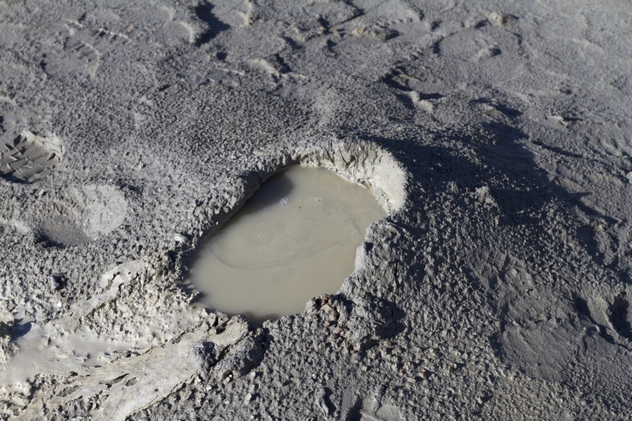
Not as widely known as Etna, Vesuvius, or Stromboli, Vulcano Island can pride itself on being the location of radioactive mud baths. Thick and smelly, Laghetti di Fanghi are popular among Italians, who endure the inconveniences for the sake of their health benefits. If you want to check them out for yourself, the tiny Vulcano Island, with an area of only 21 square kilometers (8 mi2), is located about 25 kilometers (16 mi) north from the coast of Sicily.
Aside from immersing yourself in the muddy water, you can also cover your whole body with the mud and use it as a mask. Just remember to prepare yourself for the strong, sulfurous smell that’s not well tolerated by everyone. Also, leave all jewelry and watches at home—the mud ruins them. It also ruins clothes, so have that in mind and don’t wear your best bathing suit. As with all radioactive springs, it is advised not to stay in them for longer than 15 minutes.
6Cleopatra’s Pool
Pamukkale, Turkey
Popular among tourists for its white pool terraces, Pamukkale is also worth visiting for the over 2,000-year-old city of Hierapolis. Now a UNESCO World Heritage Site, it was founded as a thermal spa by the dynasty of Attalids, the kings of Pergamon. Also used for scouring and drying wool, it was acquired by the Romans in 129 BC. After that, the site became a flourishing cosmopolitan city, where Anatolians, Graeco-Macedonians, Romans, and Jews met.
And just as it was a booming health center thousands of years ago, with pools, hot basins, and other installations designed for enjoying its thermal waters, nowadays it is still a destination that attracts many people from all over the world. The ancient baths have been opened to the public, with one of the last remaining undeveloped hot springs being turned into Cleopatra’s Pool not so long ago. Also called the Sacred Pool, it’s unique because of its radioactive waters. You can pay and swim among ancient Roman columns and other ruins, which collapsed here during a seventh-century earthquake. You can also just wander around for free, enjoying the view.
5Ramsar
Iran
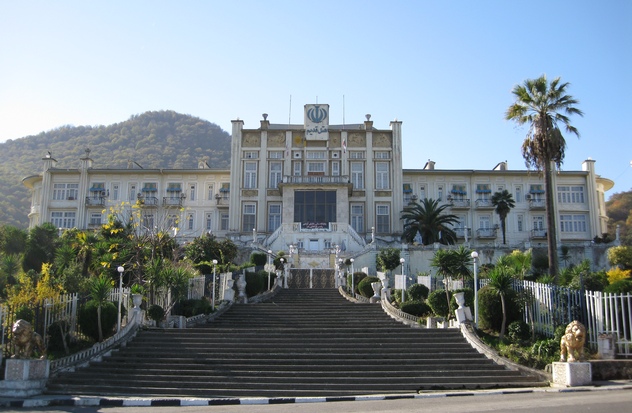
Located in northern Iran, on the coast of the Caspian Sea, Ramsar is known as the place with the highest natural background radiation on Earth: up to 260 millisieverts per year. This is partially due to radium-226 being dissolved by underground water, which is then carried to the surface through hot springs and used in local baths. Not widely known among foreigners, they are quite popular in Iran.
One of the most notable places to take a bath in Ramsar is a black water sulfur spring in the eastern part of the city. It has a lower temperature than other similar places in its vicinity and is quite active, with the amount of uranium ranging between 5–11 parts per million. If you already happen to be nearby, it is also worth visiting the vacation palace of the last Shah—Mohammad-Reza Pahlavi—which currently hosts the Caspian Museum, known by locals as “Tamashagah Khazar.” Next to it is the Old Hotel Ramsar, situated at the foot of the mountain. Built in 1934, it’s a palace with 25 rooms and five royal suites.
4Ikaria
Greece
Despite common misconception that its name derives from the mythical Icarus, it is more likely that it came from the Phoenician word for fish: ikor. This Greek island is full of hot springs. It has been inhabited since Neolithic times and frequently mentioned in ancient literature for its wild seas and famous wine.
Until the late 1950s, Ikaria was overshadowed by Greece’s more popular hot springs. Even now, the island is still far from being a touristy resort. But, if you take a chance, there’s something here for everybody. For a cautious soul, there are the slightly radioactive springs in Lefkada. For something stronger, head to Therma. Its springs—especially Mustafa, Kratsa, Apollon, and Artemis—are known since antiquity and considered some of the most radioactive in the world.
When there, it’s also worth it to take a look at the ruins of the original ancient spa town of Therma. It was buried, probably by an earthquake, but the remains of the acropolis and spa facilities were uncovered and are now open for tourists.
3Hot Springs
Arkansas, United States
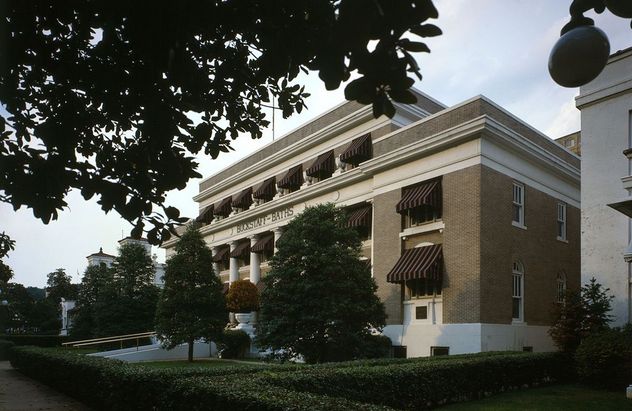
Probably the most famous hot springs in the United States, they were valued so highly that, in 1832, Congress established the first federal reservation covering the area. That later evolved to the national park system. The baths were appreciated for their healing powers even by the military, which opened Army and Navy General Hospital here in 1879. But the hot springs were known for much longer to Native Americans, who eloquently called this area the “valley of the vapors.”
When the “radium fever” started at the beginning of 20th century, the healing properties of those waters were ascribed to radium, and all the equipment used in the baths was designed to retain as much radon gas as possible. Currently, it’s the other way around—all is set up to let it escape. Right now, the entire area of the “Bathhouse Row” is protected as a National Historic Landmark District, but if you want to take a dip, two of the bathhouses—Buckstaff and Quapaw—are still operating.
2Misasa Onsen
Japan
Bathing in hot springs, called onsens, is a long tradition in Japan, and as many as 270 of them are slightly radioactive. What is perhaps surprising to foreigners is that even after the Fukushima and Nagasaki disasters, their popularity hasn’t diminished. Misasa Onsen is one of the most famous radium baths in Japan—and also one of the most radioactive. Even its name—Misasa—literally means “three mornings.” That’s how long it takes for the hot springs to cure you, or so it was believed.
The outdoor public bath—“Kawara-buro”—is the symbol of Misasa hot springs, located right by the Misasa River. Another notable spot is a hot spring under an old camphor tree and a public bath, called “Kabu-yu,” built around it. Every August, the city also hosts the Marie Curie festival, to remember the woman who discovered radium.
1Ladek Zdroj
Poland

Located in southwestern Poland, Marie Curie’s homeland, Ladek Zdroj is one of the oldest health resorts in the country. The first record of local bathing activities was inscribed in the Klodzko Chronicle in 1325. By the 16th century, there was already a bathhouse here, as well as the rules regulating its usage.
But the true rise of Ladek Zdroj started in the 19th century, when many spas were built here. Among them was the impressive “Wojciech,” inspired by Turkish baths but with a Roman-style pump room. It is still in use today, and it’s definitely worth a visit. Especially its 17th-century round swimming pool made from marble, covered by a Neo-Baroque dome.
The curative waters of Ladek Zdroj come from six free-flowing springs and one that is a borehole. Widely known for their healing powers, local baths were visited by many famous guests, including Johann Wolfgang von Goethe, Tsarina Catherine II, Emperor Alexander I, and US president John Quincy Adams.
When I’m not drinking liters of coffee or walking from Poland to Budapest, I write about travel on IzabelaDiana.com. More or less regularly.




